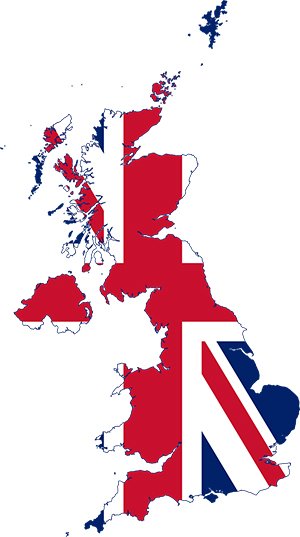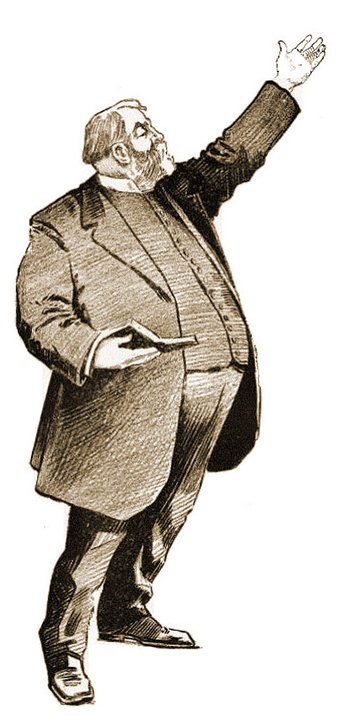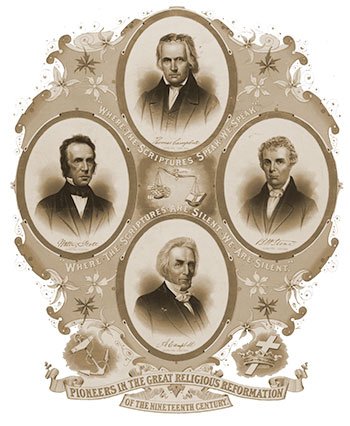1859 UK Revival: The Big Picture
 The year 1859 witnessed a remarkable surge of religious fervour that swept across the United Kingdom, leaving an enduring mark on its spiritual and social landscape. This period, known as the 1859 UK Revivals, was characterized by widespread religious awakenings, mass conversions, and a renewed emphasis on prayer and personal piety. This article delves into the history of this transformative period, exploring its antecedents, key figures, and lasting impact.
The year 1859 witnessed a remarkable surge of religious fervour that swept across the United Kingdom, leaving an enduring mark on its spiritual and social landscape. This period, known as the 1859 UK Revivals, was characterized by widespread religious awakenings, mass conversions, and a renewed emphasis on prayer and personal piety. This article delves into the history of this transformative period, exploring its antecedents, key figures, and lasting impact.
The Religious Landscape Before the Revival
In the years leading up to the 1859 Revivals, the religious landscape in the UK was diverse, with the established Church of England facing growing competition from various Protestant denominations, including Congregationalists, Baptists, Quakers, and Methodists1. While orthodox teachings were common in many Presbyterian churches, there was a sense of spiritual complacency and a lack of genuine religious zeal among many Christians2. In Wales, a sense of spiritual lukewarmness prevailed, with preaching often characterized by intellectualism and theatricality rather than genuine spiritual fervor2.
The 18th century had witnessed a decline in morality and religious standards in England, with widespread licentiousness and a rejection of biblical principles3. This decline was attributed to various factors, including the Act of Uniformity of 1662, which led to the expulsion of many devout clergy, and the reign of William of Orange, which saw the expulsion of Non-Jurors, further weakening the influence of biblical thinking3.
By the mid-19th century, however, there was a growing awareness of the need for spiritual awakening. Reports of revivals in the United States, particularly the 1857 Fulton Street Prayer Revival in New York City, began to reach the UK, inspiring hope for a similar outpouring of the Holy Spirit4. This anticipation for revival was particularly strong among ministers in Scotland, who closely followed the news of the American awakenings2.
The Spark of Revival
The 1859 UK Revivals can be traced back to a small prayer meeting in Kells, County Antrim, Northern Ireland. In late 1857, four young men, encouraged by their Presbyterian minister, began meeting regularly for prayer and Bible study5. This small gathering soon grew, and by the spring of 1859, there were sixteen prayer meetings in the parish5. On March 14th, 1859, a significant prayer meeting was held at Ahoghill Presbyterian Church, where a large crowd gathered, and many experienced a profound conviction of sin6. This event marked a turning point in the revival’s momentum.
The revival spread rapidly, first to Ahoghill and then to Ballymena5. While it began with laymen, prominent preachers like Henry Grattan Guinness and Brownlow North soon joined the movement, drawing large crowds to their open-air services and contributing to the revival’s momentum5.
Key Figures and Churches Involved
The 1859 UK Revivals were not solely driven by prominent personalities but were characterized by widespread participation and a sense of collective spiritual hunger4. Nevertheless, certain individuals played significant roles in shaping the course of the revival.
In Wales, the revival was led by Humphrey Jones, a Methodist minister, and David Morgan, a Presbyterian minister8. Jones, having experienced the Third Great Awakening in the United States, returned to Wales with a renewed passion for evangelism and, together with Morgan, ignited the revival fires in South Wales8.
In England, the revival was fueled by itinerant preachers like Reginald Radcliffe and Richard Weaver, who held large meetings in various venues, including hired halls and theaters9. These meetings were often characterized by powerful preaching and testimonies, leading to numerous conversions9.
The revivals were largely a Presbyterian phenomenon in Ulster, but not all Presbyterians supported it5. While some saw it as a genuine work of God, others viewed it with skepticism and even opposition5. This opposition was particularly strong from some Catholics, who saw the revival as a threat to their faith and actively discouraged their followers from participating. Some even resorted to selling Holy Water to counter the perceived “revival devil.” 2 In England, various churches were involved, including St. Paul’s Cathedral, Westminster Abbey, and numerous nonconformist chapels9.
Prayers and Practices
Prayer was the lifeblood of the 1859 UK Revivals4. The movement was ignited and sustained by fervent, persistent prayer, both individual and collective. Prayer meetings were held in churches, homes, workplaces, and even in the open air4. These meetings were often characterized by a deep sense of urgency, with participants pleading with God for an outpouring of His Spirit4.
In Wales, prayer meetings were held in various settings, including churches, chapels, mountaintops, workplaces, and even underground in mines and quarries4. The commitment to prayer was a defining feature of the Welsh revivals, with people gathering regularly to seek God’s face and intercede for their communities4.
In Scotland, the revival saw a significant increase in prayer meeting attendance, particularly in the United Presbyterian Church10. A notable practice in Scotland was the rotation of churches for prayer meetings, with congregations moving from one church to another to maintain the momentum of prayer11. In the Western Isles, prayer meetings were held in barns during the winter, demonstrating the dedication and perseverance of those involved in the revival12.
In England, the revival was also fueled by prayer, with many children actively participating in prayer meetings9. The nationwide prayer meeting held during the second week of 1860 is seen as a significant catalyst for the revival in England, particularly in London9.
Personal Testimonies
The 1859 UK Revivals were marked by numerous personal testimonies of transformed lives. People from all walks of life shared their experiences of conviction, repentance, and conversion. These testimonies served as powerful evidence of the revival’s impact and inspired others to seek a deeper relationship with God.
One notable testimony comes from James McQuilkin, one of the young men who initiated the prayer meeting in Kells13. He described his experience of conviction and conversion, highlighting the role of a visiting English lady, Mrs. Colville, in his spiritual awakening13. Mrs. Colville herself had faced persecution for her faith, having been rejected by her family for her Christian beliefs14.
Another account describes the transformation in Ballymena, where the entire town seemed to be gripped by the revival15. A minister noted the shift from difficulty in getting people to church to churches being filled with those seeking spiritual solace15.
Immediate and Lasting Results
The 1859 UK Revivals had a profound impact on individuals, communities, and society as a whole. The most immediate result was the large number of conversions. In Ulster alone, an estimated 100,000 people were converted during the revival5. Similar numbers were reported in Wales, where approximately 100,000 people turned to Christ16. In Scotland, the number of converts was estimated to be around 300,00016.
The revival also led to a decrease in social ills, such as crime and drunkenness6. In Ulster, judges reported having no cases to try due to the decline in criminal activity6. In County Antrim, there were times when no crime was reported to the police, and no prisoners were held in custody6. The revival also had a significant impact on reducing drunkenness. Public houses saw a decline in sales, and some even closed down due to lack of business17. In Connor, three out of nine public houses were closed as a result of the revival18. This decrease in crime and other social problems was attributed to the transforming power of the Gospel on individuals and communities6.
The revival’s impact extended beyond the UK, reaching various parts of the British Commonwealth, including Australia, southern Africa, and India20. This spread was facilitated by increased communication and travel, allowing news of the revival to reach distant communities and inspire similar awakenings20.
The 1859 UK Revivals left a lasting legacy of spiritual renewal and social reform. It contributed to the growth of evangelical Christianity and strengthened the influence of nonconformist denominations20. The revival also had a significant impact on hymnody, with new hymns and songs of praise emerging from the fervor of the period20. According to Ian Paisley, the revival is the reason that Northern Ireland is much more religiously conservative than the rest of the UK or Europe5. In Scotland, the Free Church experienced a significant increase in church attendance following the revival, with over 15,000 new members recorded in 1859 alone21.
Context and Relationship to Other Revivals
The 1859 UK Revivals were part of a larger wave of religious awakenings that swept across the globe in the mid-19th century. These revivals were interconnected, with news and testimonies traveling between countries and continents, inspiring and influencing one another20.
The revivals in the UK were particularly influenced by the revivals in the United States, especially the 1857 Fulton Street Prayer Revival in New York City22. The news of this revival, along with reports of similar awakenings in Canada, Scandinavia, and other parts of Europe, created a sense of expectancy and anticipation in the UK22. In 1859, Presbyterian conventions were held in Pittsburgh and Cincinnati to discuss the need for revival, highlighting the transatlantic exchange of ideas and concerns about spiritual awakening23.
The 1859 UK Revivals also had connections to earlier revivals in the UK. In Scotland, the revival can be seen as a continuation of earlier movements led by figures like Thomas Chalmers, Alexander Maclaren, and William Burns14. These earlier revivals laid the groundwork for the 1859 awakenings, creating a culture of prayer and evangelism that contributed to the receptivity of the people to the message of the Gospel20. Interestingly, the first beginnings of a powerful work of grace in Scotland occurred even before the revivals in the USA and Ulster10. In England, an early revival took place in Hayle, Cornwall, through the ministry of William Haslam, starting in 18579.
Scholarly Articles and Historical Accounts
The 1859 UK Revivals have been the subject of scholarly analysis and historical documentation. Various articles and books have explored the causes, characteristics, and consequences of this significant period in British religious history.
One notable scholarly article, “The Ulster Revival of 1859: Causes, Controversies, and Consequences,” provides a critical overview of the revival in Northern Ireland, examining its social, economic, and theological contexts20. Another article, “The 1859 Revival and its Enemies: Opposition to Religious Revivalism within Ulster Presbyterianism,” explores the controversies surrounding the revival, particularly the opposition from within the Presbyterian Church22.
Historical accounts of the 1859 UK Revivals can be found in various sources, including contemporary newspapers, personal testimonies, and church records5. These accounts provide valuable insights into the events, experiences, and impact of the revival5. However, documenting the revival in England presents a challenge due to the relative scarcity of written accounts compared to other regions9.
Timeline of Events
| Date | Event | Location | Significance |
| Late 1857 | Four young men, inspired by their minister, begin a prayer meeting in Kells, County Antrim. | Kells, County Antrim, Northern Ireland | Marks the humble beginnings of the 1859 UK Revivals, highlighting the importance of prayer and lay involvement. |
| Spring 1859 | The revival spreads rapidly to neighboring towns, including Ahoghill and Ballymena. | County Antrim, Northern Ireland | Demonstrates the contagious nature of the revival and its ability to quickly spread across communities. |
| March 14th, 1859 | A significant prayer meeting at Ahoghill Presbyterian Church leads to a mass conviction of sin among those present. | Ahoghill, County Antrim, Northern Ireland | Highlights the intensity of the spiritual awakening and its impact on individuals. |
| 1859 | The revival reaches its peak, spreading throughout Ulster, Wales, Scotland, and England. | United Kingdom | Marks the widespread impact of the revival across different regions and denominations. |
| 1859-1860 | Large-scale conversions are reported across the UK, with thousands turning to faith in Christ. | United Kingdom | Demonstrates the transformative power of the revival and its impact on individuals’ lives. |
| 1860s | The initial fervor of the revival begins to subside, but its effects continue to be felt. | United Kingdom | Marks the end of the main phase of the revival, but its legacy continues to shape religious and social life in the UK. |
Beneficial Takeaways
The 1859 UK Revivals offer valuable lessons for contemporary Christians and churches. Some key takeaways include:
- The Power of Prayer: The revival demonstrated the transformative power of persistent, fervent prayer. The humble prayer meeting in Kells, which sparked the revival, exemplifies the potential of dedicated prayer to ignite spiritual awakening5.
- The Importance of Lay Involvement: The revival was largely initiated and sustained by lay people, highlighting the importance of their active participation in spiritual awakenings. The four young men who started the prayer meeting in Kells were not clergy but ordinary Christians who felt compelled to seek God5.
- The Centrality of the Gospel: The revival emphasized the core message of the Gospel – sin, repentance, and salvation through faith in Jesus Christ. The mass conversions and changed lives during the revival were a direct result of the clear preaching and embrace of the Gospel message6.
- The Impact on Society: The revival had a positive impact on society, leading to a decrease in crime and an increase in social responsibility. The dramatic reduction in crime rates and the closure of public houses in Ulster demonstrate the potential of spiritual awakening to transform communities6.
- The Importance of Unity: The revival fostered unity among different denominations, demonstrating the power of Christians working together for the advancement of the Gospel. Despite theological differences, various denominations participated in and benefited from the revival, highlighting the unifying power of faith in Christ9.
Conclusion
The 1859 UK Revivals stand as a testament to the transformative power of the Holy Spirit. This period of intense spiritual awakening left an enduring legacy on the religious and social landscape of the United Kingdom. The revival’s emphasis on prayer, lay involvement, and the centrality of the Gospel continue to inspire and challenge Christians today.
The 1859 UK Revivals were not an isolated event but part of a larger wave of religious awakenings that swept across the globe in the mid-19th century. This interconnectedness highlights the dynamic nature of religious movements and the exchange of ideas and influences across geographical boundaries. The revival also demonstrates the complex interplay between social, economic, and religious factors in shaping historical events. While the revival brought about increased unity among denominations, it also exposed underlying tensions and controversies, reminding us that religious movements are often accompanied by both progress and challenges.
By studying and learning from this remarkable historical event, we can gain valuable insights for fostering spiritual renewal and societal transformation in our own time. The 1859 UK Revivals serve as a powerful reminder of the potential for religious faith to inspire positive change in individuals, communities, and the world at large.
Works cited
- Victorians: Religion | English Heritage, accessed on December 17, 2024, https://www.english-heritage.org.uk/learn/story-of-england/victorian/religion/
- Revival in Wales 1859 – UK Wells, accessed on December 17, 2024, https://ukwells.org/revivalists/revival-in-wales-1859
- “The Evangelical Revival in Britain: The Foundation of the Church Missionary Society and its Early Work in the Muslim World”, accessed on December 17, 2024, https://saudijournals.com/media/articles/SJHSS_410_665-673_cc.pdf
- 1859 Welsh Revival – BEAUTIFUL FEET, accessed on December 17, 2024, https://romans1015.com/1859-welsh/
- 1859 Ulster revival – Wikipedia, accessed on December 17, 2024, https://en.wikipedia.org/wiki/1859_Ulster_revival
- 1859 Ulster Revival, accessed on December 17, 2024, https://revival-library.org/histories/1859-ulster-revival/
- Grattan Guinness, accessed on December 17, 2024, https://www.1859.org.uk/the-people-god-used/grattan-guinness
- 1859 Welsh revival – Wikipedia, accessed on December 17, 2024, https://en.wikipedia.org/wiki/1859_Welsh_revival
- The English Revival 1859-65 – UK Wells, accessed on December 17, 2024, https://ukwells.org/revivalists/the-english-revival-1859-65
- Remembering the 1859 Revival in Scotland | Christian Library, accessed on December 17, 2024, https://www.christianstudylibrary.org/article/remembering-1859-revival-scotland
- 1859-1860 Scotland & England Revivals – BEAUTIFUL FEET, accessed on December 17, 2024, https://romans1015.com/1859-scotland/
- Revival: The Holy Spirit Works Through the Weak – Apostolic Theology, accessed on December 17, 2024, https://www.apostolictheology.org/2023/02/revival-holy-spirit-works-through-weak.html
- The Beginning of the 1859 Revival in Ulster – Banner of Truth, accessed on December 17, 2024, https://banneroftruth.org/us/resources/articles/2009/the-beginning-of-the-1859-revival-in-ulster/
- A Sketch of the 1859 Revival – Truth & Tidings, accessed on December 17, 2024, https://truthandtidings.com/2008/01/a-sketch-of-the-1859-revival/
- The Ulster Revival 1859, accessed on December 17, 2024, https://revival-library.org/histories/1859-the-ulster-revival/
- The 1859 Revival, accessed on December 17, 2024, https://www.1859.org.uk/home
- The Ulster Awakening of 1859 – Banner of Truth, accessed on December 17, 2024, https://banneroftruth.org/us/resources/articles/2009/the-ulster-awakening-of-1859/
- 1859 Revival – Connor Presbyterian Church, accessed on December 17, 2024, https://connorpresbyterianchurch.org/1859-revival/
- Welsh Revivals of 1859 and 1904 | Christian History Institute, accessed on December 17, 2024, https://christianhistoryinstitute.org/store/dvd/501399d/welsh-revivals-of-1859-and-1904
- The Ulster Revival of 1859: Causes, Controversies and Consequences | The Journal of Ecclesiastical History | Cambridge Core, accessed on December 17, 2024, https://www.cambridge.org/core/journals/journal-of-ecclesiastical-history/article/ulster-revival-of-1859-causes-controversies-and-consequences/0EFD1330A23CB823A2614CEA9CCEB16F
- Scottish Revival Series: Lasting Fruit – Christian Heritage Edinburgh, accessed on December 17, 2024, https://www.christianheritageedinburgh.org.uk/2024/03/28/scottish-revival-series-lasting-fruit/
- The 1859 revival and its enemies: opposition to religious revivalism within Ulster Presbyterianism | Irish Historical Studies – Cambridge University Press & Assessment, accessed on December 17, 2024, https://www.cambridge.org/core/journals/irish-historical-studies/article/1859-revival-and-its-enemies-opposition-to-religious-revivalism-within-ulster-presbyterianism/CE32152A3071C1241531D6F6994ACA0D
- Revival Born in a Prayer Meeting – C.S. Lewis Institute, accessed on December 17, 2024, https://www.cslewisinstitute.org/resources/revival-born-in-a-prayer-meeting/



